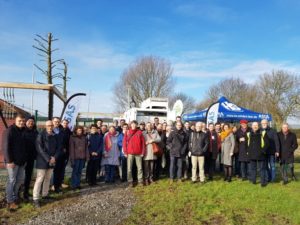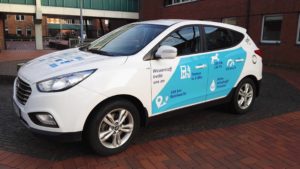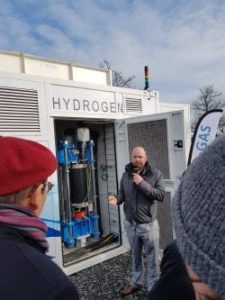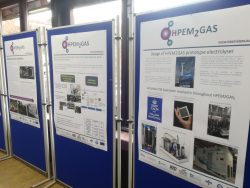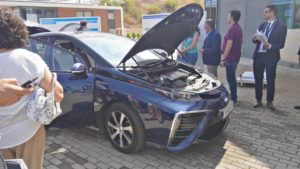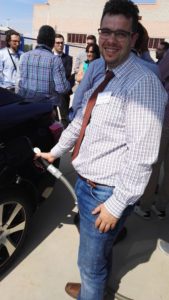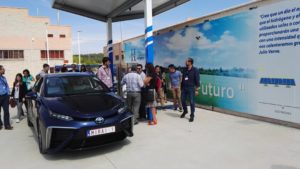Do you know the car that will fly with hydrogen?
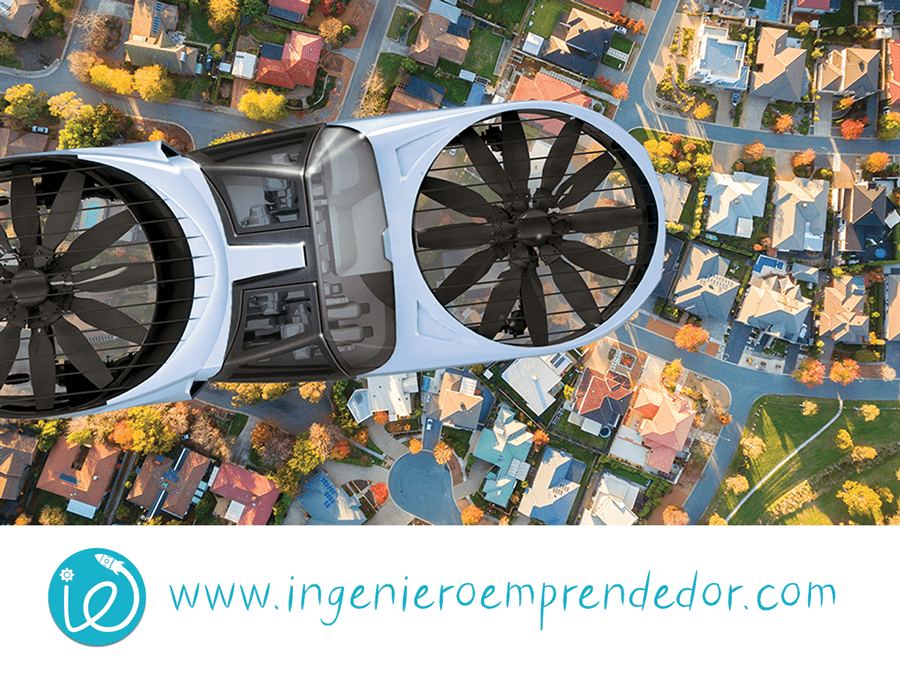
Do you know the car that will fly with hydrogen?
When we talk about flying cars, we think of winged vehicles and similar to airplanes, or with blades and similar to helicopters, but the CityHawk, developed by the Israeli firm Urban Aeronautics (UA), uses a different propulsion system, based on two large rotors, each with two propellers rotating in the opposite direction on the same axis.
This new type of urban aircraft, technically referred to as the “vertical take-off and landing electric flying car” (eVTOL Flying Car), is being developed on a large scale by Urban’s subsidiary Metro Skyways (www.metro-skyways.com) and its first manned flights are planned for 2021 or 2022, according to UA.
The CityHawk will be equivalent to a taxi or commonplace sedan, both in appearance and in passenger capacity, and will have the ability to land anywhere and fly anywhere, from a rooftop or street, to an island or different natural environments, according to UA (urbanaero.com).
MORE PASSENGERS IN A COMPACT
This aircraft will be able to fly at 270 kilometers per hour; travel distances between 150 and 360 kilometers, depending on the number of occupants; transport 760 kilos; land on an area of 3 by 8 meters; and produce a sound of up to 70 decibels, according to its technical sheet.
According to its creators these child advantageous characteristics, in comparison with other eVTOLs currently under development make it especially suitable as an air taxi, for private transportation of executives door to door and rapid response for emergencies and search and rescue tasks, even in places inaccessible to helicopters.
The absence of engines and transmissions above the head of the passengers will eliminate almost all vibration and much of the noise, explain from UA, ensuring that it will be the first of a new class of air vehicles.
“We believe that the key to commercial viability in the segment of urban mobility through vertical takeoff and landing vehicles is in a very compact aircraft with a large passenger capacity,” says Efe Janina Frankel-Yoeli, UA vice president of advertising, from Yavne (Israel).
“This is no different than any commercial airline, where the benefits are directly related to the number of passengers per aircraft and the number of airport gates available to embark and disembark those passengers,” she says.
“Our aircraft are designed to be as compact as possible and transport the chairman’s number of people. This requires an aircraft without large exposed rotors, and we have developed the technology that allows it,” explains Efe.
“The result is that in the same space and time required to land a 4-5-passenger helicopter, four CityHawk airplanes with a 16-20-passenger add up to their four pilots can land,” emphasizes Frankel-Yoeli.
“The CityHawk is also designed to meet current FAA and EASA (European Aviation Safety Agency) certification standards and has additional benefits with respect to safety and noise levels due to its “internal rotor” design,” he says.
“This essential feature also allows this eVTOL to fly and land on rough and steep terrain, and move in an airspace with obstacles where no other aircraft can fly,” explains Frankel-Yoeli.
USING HYDROGEN BATTERIES
This flying car will offer different modes of flight, providing maximum freedom and mobility in the three dimensions of obstacle-free space, flying over crowded cities of cars, buses and trucks at ground level, adds the firm, based in the city of Yavne, in central Israel.
The flying car will be powered by two turbo-shaft engines (gas turbine engines that deliver their power through an axle, similar to those of turbo propellers) with 1,000 horsepower, coupled to electric power generators, according to the firm.
According to Urban, the real version weighs 1,170 kilograms empty, and weighs 1,930 kilograms, adding another 760 kilograms corresponding to its occupants and fuel.
In addition, it will be equipped with two Safran’s “Arriel 2N turboshaft” helicopter engines, with low nitrogen oxide (NOx) emissions, such as those used by some Airbus models, such as the AS565 MBe.
The company has announced that when the basic model of this aircraft obtains the certificate of the Federal Aviation Administration (FAA), the central power supply of CityHawk will be redesigned to transform it into a vehicle 100 % ‘clean’ (free of pollutant emissions) with hydrogen propulsion.
The engines in the real version will be connected to electric generators, which charge a series of batteries, whose energy helps propel the vehicle for forward movement, according to the technology magazine ‘New Atlas’.
But the energy provided by these batteries is not yet high enough to obtain a useful range of propulsion, so UA is planning to reconvert this flying car to be powered by hydrogen fuel cells, according to this publication.
Child fuel cells are devices that generate electricity through chemical reactions, rather than using combustion, using hydrogen as a flammable, generating only water and heat as by-products, with minimal environmental pollution, according to the U.S. Department of Energy.
ITS PRECURSOR: THE UNMANNED CORMORANT
The CityHawk is the passenger version of another unmanned remote-controlled, one-tonne, rotatable-rotor-guided, disaster response and package transport flying vehicle developed by Tactical Robotics, another Urban subsidiary, called ‘Cormorant’, which has completed 250 flights validating this propulsion technology, according to Urban.
CityHawk’s design is identical to that of the ‘Cormorant’, but it will be equipped with two counter-rotating rotor motors.
to meet FAA requirements that require a flight to continue if an engine fails, reports this source.
To this safety feature is added the ability of this vehicle to deploy a ballistic parachute in the event of a catastrophic failure of any kind, he adds.
The CityHawk is designed to meet FAA requirements for dual-engine helicopters (FAR 27) and its great advantage over helicopters and other eVTOLs is its car-like size, to which roughage adds its ability to carry up to six occupants, including the pilot, according to Urban.
All rotors of the vehicle are inside the fuselage which, in addition to ensuring the safety of the individual ground, diminish to the maximum the noise or acoustic footprint that creates the vehicle, which is equivalent to a car in transit, explains this source.













